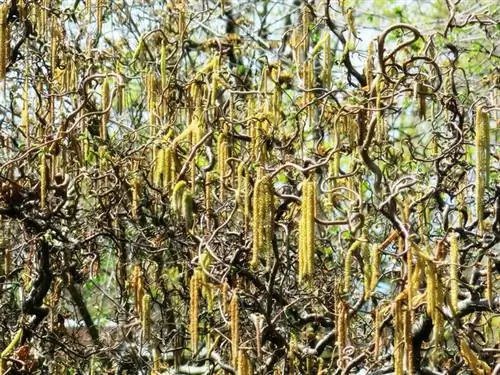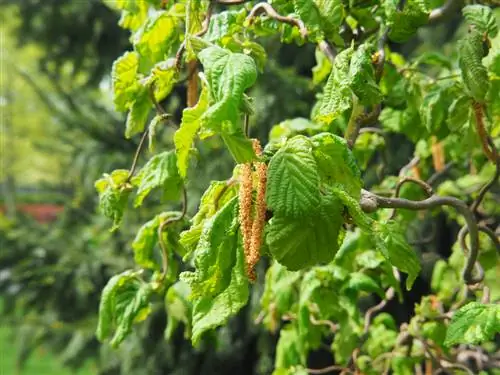- Author admin [email protected].
- Public 2023-12-16 16:46.
- Last modified 2025-01-23 11:22.
Every aquarist wants to design his tank in such a way that it looks visually attractive and becomes an eye-catcher in the home. At the same time, the materials used should fit the fish's habitat, not have an adverse effect on the water parameters and, at best, even serve as additional food for the aquatic inhabitants. The native corkscrew willow meets many of these requirements.

Is corkscrew willow suitable for the aquarium?
The corkscrew willow can be used as an attractive and useful decoration in the aquarium. It offers algae reduction through acetylsalicylic acid, serves as a feed additive for catfish and, after drying, can be refined with moss or plants such as Anubias.
Identifying features of the zigzag willow
- This willow plant forms twisted branches that look very pretty even without leaves.
- The shrub, which grows between four and six meters high, is summer green.
- The leaves are narrow lanceolate and light green in color.
- Inconspicuous flowers appear in March and April, from which woolly fruit catkins develop from May onwards.
Does this wood harm the aquarium inhabitants?
A willow branch is often used as an algae killer that is harmless to fish. The branch releases acetylsalicylic acid into the water, thereby stopping the growth of green algae. However, the amount of this active ingredient is so small that it does not harm the fish even if they eat the willow wood.
In addition, catfish need food containing wood content to prevent digestive problems. The branches of the corkscrew willow are very suitable for meeting these needs.
How is corkscrew willow prepared and introduced into the tank?
- Always cut the branches of the zigzag willow in places that are far away from industrial plants and busy roads. The reason: Even small amounts of insecticides or pesticides could pollute the water to such an extent that snails, shrimp and fish are damaged.
- It is not recommended to put the freshly cut wood directly into the basin. Be sure to let it dry before use.
- Remove the bark before decorating. This can be easily removed from the dried branches.
- Water the branches with cold water. This means they float less when inserted.
- You can attach the branches of the corkscrew willow to the window with suction cups or fix them to the ground using a heavy object.
- The woods look particularly attractive if you stick mosses or the rhizomes of Anubias or Bucephalandra on them with a special plant glue (€9.00 at Amazon).
Tip
The twisted shape and branches of the corkscrew willow allow you to recreate authentic landscapes that resemble those of mangrove forests. It looks very nice if you let the branch protrude into the tank from above, contrary to the usual position.






